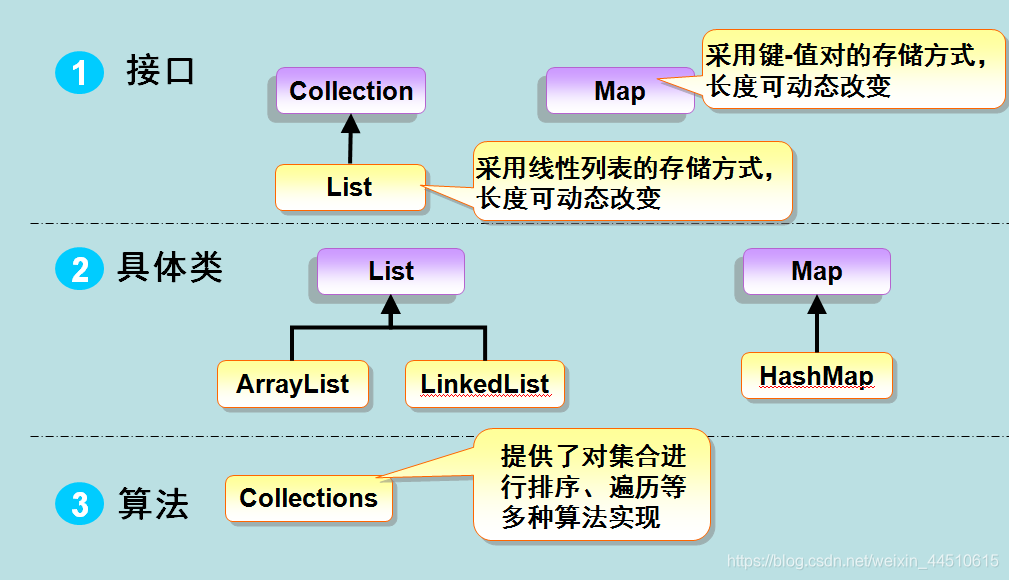版权声明:本文为博主原创文章,遵循 CC 4.0 BY-SA 版权协议,转载请附上原文出处链接和本声明。

众所周知:List是接口,ArrayList实现了List接口。那HashSet又是什么玩意?
ArrayList实现了List接口,HashSet实现了Set接口,List和Set都是继承Collection接口。
ArrayList底层是动态数组,HashSet底层是哈希表。
ArrayList存放的是对象的引用,HashSet存放之前检索对象的HashCode,所以当存入对象时要重写hashCode(),如果只是比较对象,只需要重写equals()方法,
ArrayList是有序可重复,HashSet是无序不可重复。
对于 HashSet 而言,它是基于 HashMap 实现的,底层采用 HashMap 来保存元素
import java.util.ArrayList;
import java.util.Collection;
import java.util.HashSet;
public class UseSetAppMain {
public static void main(String[] args) {
printCollection(addElementsToCollection(new HashSet()));
/*
输出class java.util.HashSet中的元素,共5个
str3
str4
str1
str2
str0
*/
System.out.println("-------------------------");
printCollection(addElementsToCollection(new ArrayList()));
/*
输出class java.util.ArrayList中的元素,共10个
str0
str1
str2
str3
str4
str0
str1
str2
str3
str4
*/
}
// 添加数据
public static Collection addElementsToCollection(Collection collection) {
for (int i = 0; i < 10; i++) {
collection.add("str" + (i % 5));
}
return collection;
}
public static void printCollection(Collection collection) {
System.out.println();
System.out.println("输出" + collection.getClass() + "中的元素,共" + collection.size() + "个");
try {
for (Object element : collection) {
System.out.println(element);
}
} catch (Exception e) {
e.printStackTrace();
}
}
}